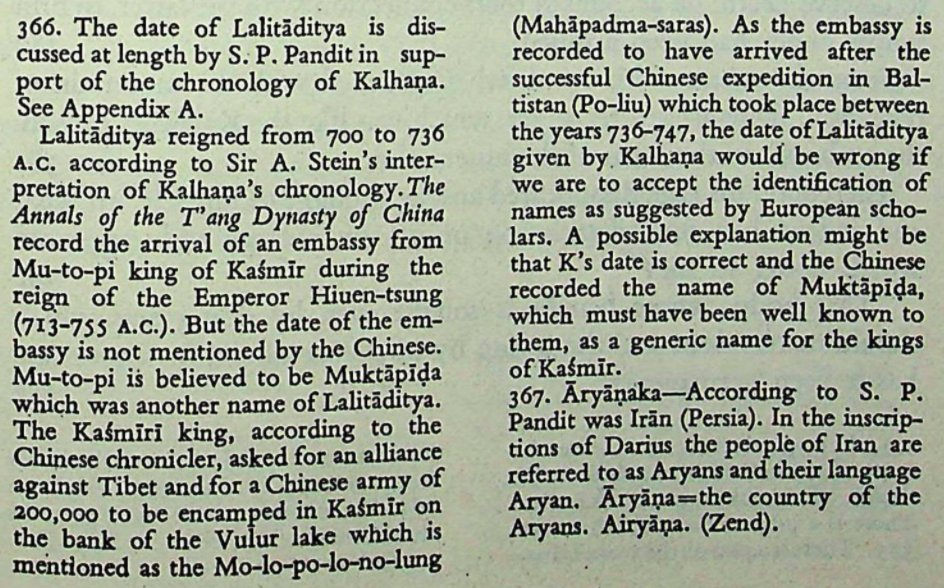The father in law of a Khotanese king in Gosthana Vyakarana - this single line tells much about Lalitaditya Muktapida than anything else except Kalhana's Rajatarangini. But, there is no mention of Lalitaditya here. What do we know of him and his achievements? 

Now, do a combined reading of these three. What do we get? Chinese fighting Tibet in Tarim Basin and Gilgit, Khotan-Shahi marital alliance and Lalitaditya fighting Tibetans. And then, have the 751 Battle of Talas - Arabs, Tibetans and Qarluqs on one side and Chinese on the other.
Timelines.
Suluk Khagan killed in 738 - this made China and Arabs neighbours.
Phrom Kesar(739-746)
Lalitaditya(733-760)
Vijaya Sangrama(745-764)
Palola Shahi Kingdom was snuffed out by Tibet in 747
Battle of Talas 751
Suluk Khagan killed in 738 - this made China and Arabs neighbours.
Phrom Kesar(739-746)
Lalitaditya(733-760)
Vijaya Sangrama(745-764)
Palola Shahi Kingdom was snuffed out by Tibet in 747
Battle of Talas 751
So, what was happening? In the West, it was Shahi-Arab fight. In the North, it was Arab-Turkic fight. In the East, it was China-Tibet fight, with centre of action being Tarim Basin extending to Baltistan on one side and Ferghana on the other.
Alliances were knit - Kashmir-Gilgit-Khotan-Kabul Shahi aligned with Qarluqs and China on one side and Tibet and Arabs on the other side. A majority of Lalitaditya's and Phrom Kesar's Central Indian victories are from that campaign.
What other information to we have? Comments from Ranjan Pandit's Rajatarangini translation. Ignore the dates. 

This hints at a vassalage but I really doubt it. Because had it been vassalage and utter dependency on Chinese, we wouldn't have seen the Shahis and Kashmir holding fort even after Talas.
The Empire of the Steppes: A History of Central Asia - René Grousset
The Empire of the Steppes: A History of Central Asia - René Grousset

No invasion of Kashmir during the reigns of Lalitaditya or his successor are known and the Arab invasion wave of 754-775 was trashed by the Shahis. In fact, Talas didn't change anything much - Umayyad Caliphate collapsed in 750, An Lushan Rebellion ripped China apart from 755
and Tibet which started to flex muscles because of this twin chaos fragmented less than a century after this - never to rise again. And Arabs retreated by 820. The only ones who benefited are the local converted turks - the Saffrids and the Uyghur.
Now, this...a Tang Princess sent to Tibet in 710 want an escape way out and sends a secret message to Kashmir of all places, and Zabul notes it!! 

And another. These two are the daughters of Phrom Kesar's daughter married to Khotan and they land up in Kashmir. What sort of an alliance is this, and between whom and whom? 

• • •
Missing some Tweet in this thread? You can try to
force a refresh









